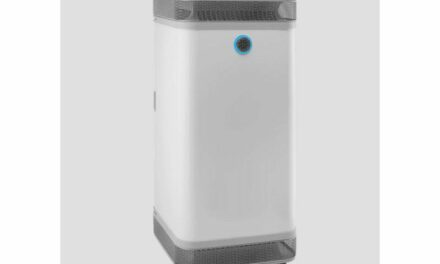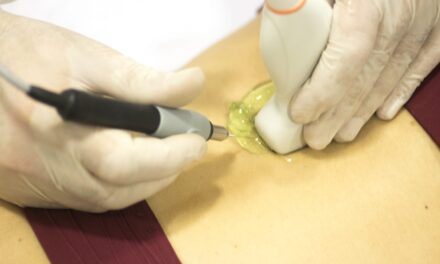Facilities can successfully combat HAIs with a variety of protections
By Cindy Juhas
Healthcare-associated infections (HAIs) affect 5%-10% of hospitalized patients in the United States annually, with approximately 1.7 million infections occurring each year, resulting in 99,000 deaths and billions of dollars in additional costs, according to the Centers for Disease Control and Prevention (CDC). With so much at stake, it is no surprise that the U.S. Department of Health and Human Safety has declared the prevention and reduction of HAI to be a top priority.
The good news is that prevention is possible. CDC research has shown up to a 70% decrease in infections when healthcare facilities, care teams, and medical staff take specific actions to target and prevent infections.
One strategy that can often be overlooked is integrating anti-HAI equipment throughout a facility. There are various ways to prevent and combat HAI in healthcare facilities, but effective equipment solutions provide an extra layer of protection for patients and hospital staff. They include ultraviolet C (UV-C) technology, advance detection methods, and antimicrobial surfaces.
Ultraviolet Lights
Recent studies show that the airborne dispersion of resistant organisms such as Clostridium difficile (C. diff) and methicillin-resistant Staphylococcus aureus (MRSA) often plays a role in non-respiratory infections. In fact, hospital air samples have been found to be up to eight times more contaminated than surfaces with MRSA and C. diff.
No matter how hard staff personnel works to keep the environment sterile, the constant flow of traffic within a hospital introduces new sources of human bacteria, filling the air and settling on surfaces between cleanings. As a result, UV-C disinfecting is a critical failsafe that can sanitize both the air and surfaces in a room when conducted in conjunction with conventional cleaning methods.
UV-C can be used in an HVAC system to scan and disinfect the air continuously, or it can be emanated from a mobile unit used in unoccupied patient rooms or between surgeries in an operating room.
A study conducted at the University of Pennsylvania’s Perelman School of Medicine found that using a mobile UV-C disinfecting unit—in conjunction with standard cleaning tactics—reduced the number of infections by 25% without adversely impacting room turnaround time. Additionally, the same study found that rooms that had not been treated with the UV system saw a 16% increase in infections.
Results like this equate to substantial savings and an increase in quality of care. Consequently, facilities are increasingly incorporating UV-C techniques, while a growing number of manufacturers are ramping up innovation efforts in this area.
Suction Regulators and Vacuums
Combating HAI is a multifaceted effort that also includes monitoring the medical devices used in a facility. A CDC study, published in the New England Journal of Medicine, regarding HAI found that 25.6% of all HAI occurrences were linked to contaminated medical devices.
Of all the medical devices that can harbor and transport HAI, suction regulators and vacuums are a dangerous culprit. With no regulations pertaining to the cleaning of suction regulators, the devices—which are used in many different healthcare settings, including operating rooms—can become contaminated and increase the likelihood of patient infection.
One study by the Detroit Medical Center and Wayne State University Health Center found that 37 percent of regulators were compromised, with contaminants spreading into the far reaches of the regulator within 30 minutes. Additionally, the same study found that contaminated regulators passed pathogens to patients within 24 hours.
Further, a white paper by The Joint Commission, recommends cleaning, disinfection, and sterilization best practices to mitigate the HAI risks associated with vacuum regulators, but these techniques are subject to human behavior and possible human error. Healthcare staff must remember to check for contamination and then begin the cleaning process, which for some regulators can be difficult and risky, exposing the healthcare worker to dangerous pathogens.
Innovative manufacturers have developed suction regulators that indicate when they have been contaminated. For healthcare facilities looking to minimize instances of HAI from equipment, these smart-equipment solutions are vital.
In an attempt to make it easier on facility staff, optical sensor technology is being integrated to track and identify contamination and alerting staff when to replace the disposable cartridge that contains the pathogens. The use of senor technology is expected to expand as facilities aim to protect personnel and rely on “internet of things” solutions for a smarter supply chain.
Antimicrobial Copper
A retrospective study showed that HAI were the fifth-leading cause of death at U.S. acute care hospitals. Solutions, such as using UV light technology and initiating hand-washing and glove-wearing policies, are all effective in preventing HAI, but they also require a change in behavior for hospital staff.
An individual must bring in the UV technology to disinfect the room; staff must remember to wash their hands between every interaction; gloves must be changed after each contamination. Also, when people are involved, mistakes can be made.
The good news is there is a passive way to fight HAI constantly, and the answer is as simple as the penny—specifically, copper. While the solution might cost more than a cent, the science behind it makes plenty of sense.
Copper has antimicrobial properties that break down cell membranes and destroy the DNA of a cell, which makes the cell unable to replicate itself. That reduces the risk of infection spreading. Plus, without cell replication there is no cell mutation and, consequently, there is little risk of an HAI becoming resistant to antibiotics.
According to a recent article in Current Trends in Microbiology, surfaces made of copper alloys had 83% less live bacteria than surfaces without copper components. That same report found that infection rates across hospital rooms, which integrated copper HAI solutions, reduced the rate of infection by 58% compared to rooms without copper.
The benefits to using copper in healthcare facilities are numerous. In addition to reducing HAI and decreasing dependence on antibiotics, using copper also ensures constant protection. It does not need to be turned on or activated because it is always working against infection-causing bacteria.
Copper solutions are extremely cost-effective, considering HAI cost U.S. hospitals between $35.7 and $45 billion a year, and equipment fortified with copper does not significantly increase the purchase price. From an accounting perspective, this simple switch in metals is something of a no-brainer.
Conclusions
HAI are one of the most common threats to patient safety, but there are many strategies healthcare facilities and caregivers can use to prevent infections. In the most recent National and State Healthcare-Associated Infections Progress Report by the CDC, HAI instances have been decreasing or remaining at stable levels across the board at facilities implementing infection-prevention policies, equipment, and technology.
To continue successfully reducing instances of HAI in hospital settings, it is vital to integrate product-based solutions. By combing the power of existing policy with equipment engineered to fight and kill bacteria, hospitals can attain new levels of success in infection prevention.
The supply chain can hold a host of cost- and life-saving options for a facility. Thanks to its plethora of manufacturing connections and access to the latest medical breakthroughs, equipment solutions are the perfect partner for a facility in the war on HAI.
Cindy Juhas is the chief strategy officer of CME, a national distributor of healthcare equipment representing more than 1,400 manufacturers and 1.2 milion items, including a wide array of HAI-reducing equipment. Questions and comments can be directed to 24×7 Magazine chief editor Keri Forsythe-Stephens at [email protected].
References:
- Magill S, Edwards J, Bamberg W, et al. Multistate point-prevalence survey of healthcare-associatied infections. N Engl J Med. 2014;370:1198-1208; doi: 10.1056/NEJMoa1306801
- Kaye KS, Marchaim D, Smialowicz C, et al. Suction regulators: a potential vector for hospital-acquired pathogens. Infect Control Hosp Epidemiol. 2010;31(7):772-4; doi: 10.1086/653820.
- Chun C and Zohdy M. Medical suction and fluid waste management: patient and workplace safety considerations for healthcare organizations [white paper]. Joint Commission International. Oak Brook; IL: Joint Commission International. Available at: www.jointcommissioninternational.org/assets/3/7/JCI_WP_Med_Suction_and_Fluid_Waste_Mgt_Final_(1).pdf
- Stone P. Economic burden of healthcare-associated infections: an American perspective. Expert Rev Pharmacoecon Outcomes Res. 2009; 9(5): 417–422; doi: 10.1586/erp.09.53
- Michels H & Michels C. Copper alloys: The new ‘old’ weapon in the fight against infectious disease. Curr Trends Microbio. 2016;10(1):23-45.
- National and State Healthcare Associated Infections: Progress Report. Atlanta: Centers for Disease Control and Prevention, 2016. Available at: www.cdc.gov/HAI/pdfs/progress-report/hai-progress-report.pdf





